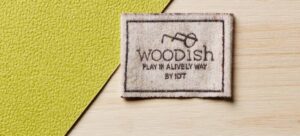Managing fashion at scale has never been easy — and with the industry’s recent growth, it has only become more complex. It’s not just about market trends, which are ever-changing and hard to predict, but also about the logistics of production itself: suppliers, factories in different countries, tight deadlines… Keeping control over every garment or collection is a real challenge.
That’s where QR codes, NFC chips, and RFID technology come into play. Integrating them into labels allows each garment to be linked to information about batches, production processes, or quality certificates — all instantly accessible from any device. NFC chips also enable secure verification and data updates over time, while RFID supports mass reading of garments at a distance — particularly useful for inventory management and logistics in premium collections or limited editions.
The benefits for brands are clear: tighter production control, fewer errors and counterfeiting risks, and real-time traceability of garments and batches — all without compromising label design or brand identity.
In short, smart labels have moved from being a nice-to-have to an absolute must-have.
How Do Clothing Labels with Technology Work?
As we mentioned, for a major fashion brand, a label can be a powerful tool to maintain control over production and quality. Adding
NFC technology works similarly, but uses a tiny chip embedded in the label. Simply bringing a device close to the tag gives access to the information without scanning, and it also allows for secure verification and updates over time.
RFID, on the other hand, can read multiple tags remotely and automatically, without direct contact. This makes it especially useful for inventory and logistics management, as teams can know in real time which garments are in the warehouse or in-store.
Advantages and Disadvantages of QR Codes, NFC Chips, and RFID Labels for Clothing
A single garment can combine these technologies: QR codes for quick access to specific information, NFC for secure verification and data updates, and RFID for large-scale control and traceability across the supply chain. However, depending on your main objectives, you might choose one system over another based on the following considerations:
| Technology | Pros | Cons | Recommended primary use |
| QR | – Easy to implement and readable with any smartphone. – Low cost. – Visually customizable without affecting aesthetics. | – Requires manual scanning. – Does not allow secure verification on its own. | Quick access to specific information: certificates, care instructions, production details. |
| NFC | – Instant access by simply bringing the device close. – Allows updates and secure verification. – Discreet integration into the label. | – Requires NFC-compatible devices. – Higher cost than QR. | Premium collections, limited editions, detailed authenticity and traceability. |
| RFID | – Mass and automatic reading of multiple tags at a distance. – Ideal for inventory control and logistics. – Durable and reliable. | – Not directly accessible to consumers. – Higher implementation and reading costs. | Internal stock management, large-scale traceability, logistics, and supply chain tracking. |
In short, thanks to QR codes, NFC chips, or RFID technology, each garment can be linked to batch information, certifications, or production processes, improving traceability, reducing errors, and protecting the brand.



